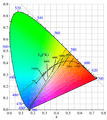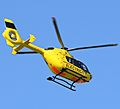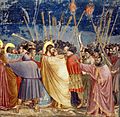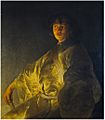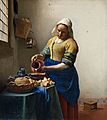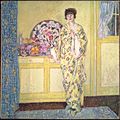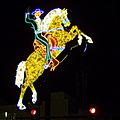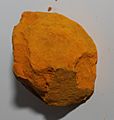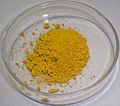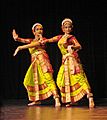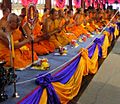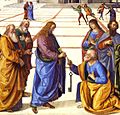Yellow facts for kids
Yellow is a bright and cheerful color. It is the color of things like the outer skin of a lemon, the sunny flower of a dandelion, and the peel of a banana. Yellow is also the color of the middle light on a stoplight.
Contents
What is Yellow?
Yellow is one of the main colors we see. It is a primary color in art, which means you can't make it by mixing other colors. However, on computer screens, yellow is made by mixing red and green light.
Yellow is often linked to sunshine, happiness, and energy. It's a color that easily catches your eye!
Different Shades of Yellow
Just like there are many shades of blue or green, there are many different shades of yellow! Some yellows are very light, almost white, while others are deep and rich, like gold. Here are a few examples of how different yellows look:
- Yellow Mist: A very light, soft yellow, like a pale banana.
- Cream: A smooth, light yellow, often seen in dairy products.
- Lemon Yellow: A bright, clear yellow, just like a fresh lemon.
- Golden: A shiny, deep yellow, like the color of gold coins.
- Mustard: A darker, brownish-yellow, like the condiment.
- Amber: A warm, golden-yellow, like the color of tree resin that has turned into a gem.
- School Bus Yellow: The bright, noticeable yellow used for school buses in many places.
- Olive: A greenish-yellow, often seen in military uniforms or some plants.
Many of these shades have special names, like "Banana Mania" or "Laser Lemon," which are often used for crayons or paints.
Yellow in Nature
Yellow is everywhere in nature!
- Plants and Flowers: Many flowers, like dandelions, sunflowers, and daffodils, are yellow. This color often helps attract insects for pollination.
- Fruits and Vegetables: Think of lemons, bananas, and corn. Their yellow color often comes from natural pigments called carotenoids.
- Animals: Some birds, like canaries, are bright yellow. The yolks of eggs are also yellow because of carotenoids in the chicken's diet.
- Autumn Leaves: When leaves change color in the fall, many turn a beautiful yellow before they fall off the trees.
Yellow in Culture and History
Yellow has been important throughout history and in different cultures:
- Ancient Art: Early humans used yellow pigments, like yellow ochre, to create cave paintings thousands of years ago.
- Royalty and Religion: In ancient China, bright yellow was a special color reserved for the Emperor. You can still see yellow roofs on imperial buildings in the Forbidden City. In many Buddhist traditions, monks wear saffron or yellow robes.
- Safety and Visibility: Because yellow is so bright and easy to see, it's often used for things that need to stand out. This includes school buses, safety vests, and road signs.
- Sports: In the Tour de France bicycle race, the leader wears a special yellow jersey.
- Symbolism: Yellow can mean different things. It often stands for happiness, optimism, and energy. However, in some older traditions, it was sometimes linked to jealousy or betrayal. For example, in medieval art, Judas Iscariot was sometimes shown wearing yellow.
Related pages
Images for kids
-
American aspens, Populus tremuloides
-
Bradley Wiggins wears the yellow jersey in the 2012 Tour de France.
-
Autumn colors along the Eagle River near Anchorage, Alaska
-
Bananas, like autumn leaves, canaries and egg yolks, get their yellow color from natural pigments called carotenoids.
-
The yolk of a raw egg. The color comes from the xanthophyll carotenoids lutein and zeaxanthin
-
Image of a horse colored with yellow ochre from Lascaux cave.
-
Byzantine art made lavish use of gold, seen in this detail of the mosaic of the Emperor Justinian from the Basilica of San Vitale in Ravenna, Italy (before 547 AD).
-
The Kiss of Judas (1304–06) by Giotto di Bondone, followed the Medieval tradition of clothing Judas Iscariot in a yellow toga.
-
Young Man in a Yellow Robe Jan Lievens, c. 1630–1631
-
The Milkmaid by Johannes Vermeer (c. 1658)
-
Yellow Room, Frederick Carl Frieseke, 1910
-
The Palácio do Planalto, official workplace of the President of Brazil, illuminated in yellow light.
-
Orpiment was a source of yellow pigment from ancient Egypt through the 19th century, though it is highly toxic.
-
The dye and spice saffron comes from the dried red stigma of this plant, the crocus sativus.
-
Curcuma longa, also known as Turmeric, has been used for centuries in India as a dye, particularly for monk's robes. it is also commonly used as a medicine and as a spice in Indian cooking.
-
Portrait of the Zhengde Emperor from the Ming dynasty.
-
The Qianlong Emperor in court dress (18th century).
-
Daoguang period Peking glass vase. The color is named "Imperial Yellow" after the banner of the Qing Dynasty.
-
Yellow roofs in the Forbidden City, which are limited to imperial buildings.
-
Neon lights in modern Shanghai show a predominance of red and yellow.
-
In North America, school buses such as this one in Albemarle County, Virginia are required to be painted yellow.
-
Yellow penalty card used during an association football match
-
The Empress Eugenie dressed as Marie Antoinette, painted by Franz Winterhalter (1854)
-
Portrait of Madame Kuznetsova, by Ilya Repin. (1901)
-
The Ball by James Tissot (1880)
-
Singer Kylie Minogue performs at a Nobel Prize Concert
-
Buddhist monks in Tibet
-
Christ giving the golden key of the kingdom heaven to Saint Peter (1481–82), by Pietro Perugino. The golden key is the symbol of the Pope.
-
Pope Benedict XVI. The Pope traditionally wears gold and white outside St. Peter's Basilica.
See also
 In Spanish: Amarillo para niños
In Spanish: Amarillo para niños


